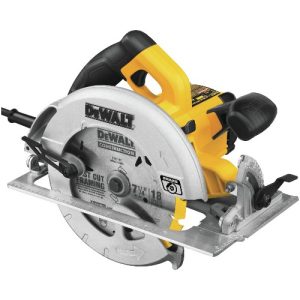 While every household should have a hand saw, that’s not the only saw you can buy. In fact, there are tons of different types of saws — both hand-powered and mechanically-powered (electric or gas). Here’s our saw buying guide. Here is our ultimate guide to buying and using many different types of saws.
While every household should have a hand saw, that’s not the only saw you can buy. In fact, there are tons of different types of saws — both hand-powered and mechanically-powered (electric or gas). Here’s our saw buying guide. Here is our ultimate guide to buying and using many different types of saws.
Do you want a saw powered by electricity or one powered by good old-fashioned hand power? Does your saw need to be lightweight and portable or do you want a more powerful, but less mobile, tabletop saw? Not sure what type of saw you need? No problem. Let’s take a deeper look at the various types of saws available as well as their pros and cons.
Common Uses of Saws
From D.I.Y. household repair to extensive commercial construction, saws are versatile and often invaluable tools. Common uses for saws include home remodeling, furniture building tiling, and carpentry. There’s a saw available to cut through just about everything including wood, drywall, metal, concrete, and more. With the right saw (and blade) practically any surface can be cleanly cut. Most major tool manufacturers offer full lines of saws. When shopping for saws, you’ll likely encounter many familiar brands like Black & Decker, Bosch, DEWALK, Dremel, Makita, and more.
Mechanically Powered Saws
Looking for a bit more power?
Mechanically powered saws operate by batteries, direct wire, or even an internal combustion engine. Mechanically powered saws can be divided into three types:
• Circular blade
• Reciprocating blade
• Continuous band
Mechanically powered saws are often powerful, fast, and relatively easy to use.
Circular Saw
This is the most common type of handheld saw. These handhelds fit many different blade sizes and styles. With the right blade, a standard circular saw can cut through just about anything.
Circular saws are sometimes called buzz saws. They were first used in sawmills to cut beams. Although a handheld circular saw is obviously much smaller than the kind used in sawmills, the basic design remains the same.
Reciprocating Blade Saws
Reciprocating saws cut by moving a blade quickly back and forth. They can be handheld or fixed to a platform. Probably the most popular type of saw with a reciprocating blade is a jigsaw. This is a handheld saw with a narrow blade. Jigsaws are rather unique in that they’re able to cut curved lines. This flexibility can be useful if you’re building large, multi-shaped items like furniture.
Continuous Band Saws
Reciprocating saws have one blade which moves back and forth. Continuous saws use a different method. The blade is a long band of metal with teeth.
Band Saws
This is a stationary continuous-band saw. The blade is a band of metal on wheels that all rotate on the same plain. You’ll commonly see these types of saws used to cut large pieces of timber. You might also see them at the butcher, too. Band saws are often used to cut meat.
Chainsaw
This is a handheld continuous band saw. They’re typically used for heavy-duty jobs like cutting brush and trees. Loud and powerful, most chainsaws are powered by a two-stroke internal combustion engine. Recently, electric chainsaws have been making in-roads into the market.
Best Saw for Beginners
If you’re starting, it’s best to use a handsaw. They’re not as powerful as other saws, but they’re much easier to control. After learning control with a handsaw, move on to power saws. When choosing a power saw, consider what type of projects you’ll do. A circular saw is a good option if you primarily work with wood. Of course, there’s no shame in consulting a professional, either. Nu-Tech will always be here to help!


